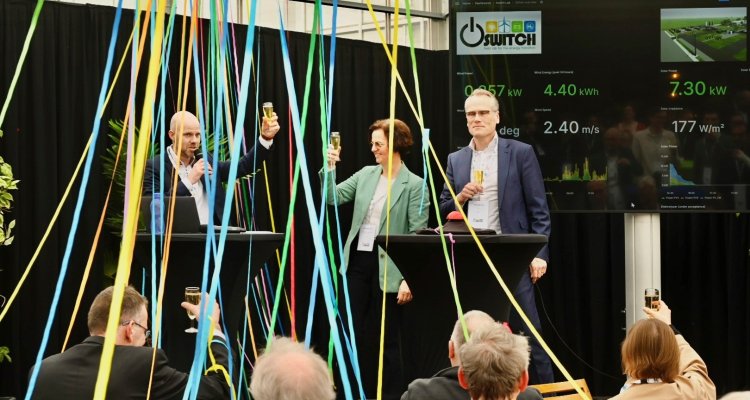
News
SWITCH field lab of TNO and Wageningen University & Research/ACRRES opened
The SWITCH fieldlab in Lelystad was opened on Wednesday 27 March. Here, TNO and Wageningen University & Research/ACRRES are investigating how our future energy system, with wind and solar as primary sources, can remain stable and affordable. The fieldlab integrates wind turbines, solar panels, electrolysers, and battery systems in such a way that energy supply can be matched to market demand while optimising electricity grid utilisation.
Flexible energy system
Innovations are necessary to maintain the stability and affordability of the electricity grid. The use of fossil fuels is being phased out and switching to renewable energy production. Meanwhile, the electricity grid becomes so congested that businesses and new homes cannot be connected. Henk Jan Vink, managing director of TNO's Energy and Materials Transition unit, explains ‘A systemic approach is required. The SWITCH lab specifically enables us to test and devise solutions on a small scale alongside businesses, government, and educational institutions, to make our future energy system flexible and stable. This helps prevent scenarios such as potential grid congestion when we produce large quantities of wind energy in the North Sea by 2030.’
TNO and WUR/ACRRES have been working in recent years on the realization of the SWITCH field lab, where various configurations of generation, storage, and usage systems can be tested. The aim is to help address the challenges of the energy transition. The field lab can be used to further sustainable practices in the agricultural sector. Chris de Visser, Business Unit Manager at WUR/ACRRES, says: 'The field lab can contribute to enabling rural areas to produce more sustainable energy despite grid congestion by maximizing the local use of locally produced energy.'
A unique test facility
The fieldlab incorporates wind turbines, solar panels, electrolysers, and battery systems. By interconnecting these components, energy supply can be aligned with market demand while optimizing electricity grid usage. What sets this facility apart is its ability to directly link solar and wind production to the elektrolyser and battery. This enables testing a wide variety of configurations in the field and developing control strategies accordingly.